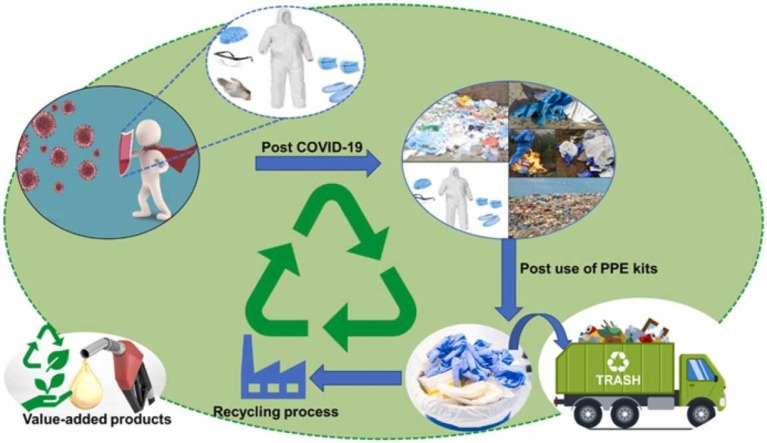- Record: found
- Abstract: found
- Article: not found
Key Ingredients and Recycling Strategy of Personal Protective Equipment (PPE): Towards Sustainable Solution for the COVID-19 like Pandemics

Read this article at
Abstract
The COVID-19 pandemic has intensified the complications of plastic trash management and disposal. The current situation of living in fear of transmission of the COVID-19 virus has further transformed our behavioural models, such as regularly using personal protective equipment (PPE) kits and single-use applications for day to day needs etc. It has been estimated that with the passage of the coronavirus epidemic every month, there is expected use of 200 billion pieces of single-use facemasks and gloves. PPE are well established now as life-saving items for medicinal specialists to stay safe through the COVID-19 pandemic. Different processes such as glycolysis, hydrogenation, aminolysis, hydrolysis, pyrolysis, and gasification are now working on finding advanced technologies to transfer waste PPE into value-added products. Here, in this article, we have discussed the recycling strategies of PPE, important components (such as medical gloves, gowns, masks & respirators and other face and eye protection) and the raw materials used in PPE kits. Further, the value addition methods to recycling the PPE kits, chemical & apparatus used in recycling and recycling components into value-added products. Finally, the biorenewable materials in PPE for textiles components have been discussed along with concluded remarks.
Graphical abstract
Related collections
Most cited references164
- Record: found
- Abstract: found
- Article: found
The Socio-Economic Implications of the Coronavirus and COVID-19 Pandemic: A Review
- Record: found
- Abstract: not found
- Article: not found
Developing Covid-19 Vaccines at Pandemic Speed
- Record: found
- Abstract: not found
- Article: not found

